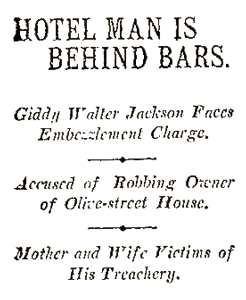 May 23, 1905
May 23, 1905
Walter Jackson gave A. J. Munn due pause, back in mid-aught four, when he approached Munn seeking a position at Munn‘s hotel. (You can‘t be too careful when hiring for an establishment that bears your own name, e.g., the Hotel Munn.) You see, Munn detected liquor on Jackson‘s breath, but, some highly-placed hoteliers had recommended Jackson, so Munn engaged him with and on the distinct understanding that Jackson would foreswear liquor and gambling. Any On Bunker Hill reader knows the story won‘t end there.
Jackson was a gay and debonair fellow, and quickly rose to the rank of manager. But Mr. Munn began to have his doubts about Jackson as the hotel took in less and less money. Jackson proved to be a skilled tactician (and statistician) and evaded detection; it didn‘t help Munn that the Jackson-hypnotized hotel residents declared they still owed accounts, when in fact they had paid them and secretly held receipts signed by Jackson.
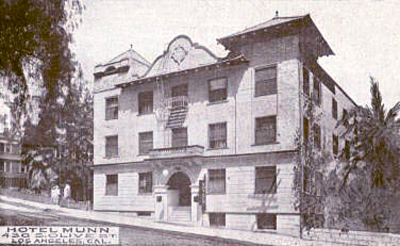
Jackson‘s undoing came in the form of an Examiner reporter, resident of the Munn, who went against the touts at the Ascot, and skipped town after losing everything. (The Ascot Park was a one-mile oval track for horse racing built in 1904, and closed in 1910 after betting on horses became illegal in California.)
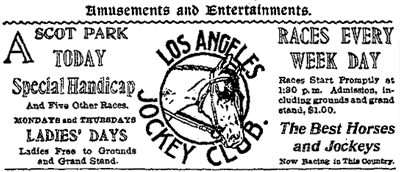
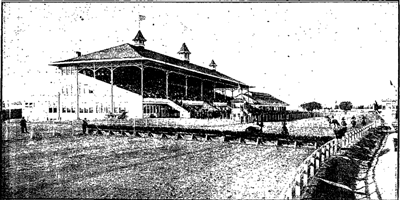
The Hotel Munn held a claim against the reporter for $48.15 ($1,094 USD2007) and Munn wrote the reporter‘s mother in the East. After a long and patient wait, he wrote again. Oh no, said the mother, I immediately mailed you $50 to cancel the obligation.
Thereafter Munn began digging in earnest and found someone to whom Jackson had issued a receipt for the money–uncredited in the books. With said evidence of cash appropriation, Jackson was summarily fired. Proprietor Munn was able to come up with shortage of about $100, and Mrs. Jackson, ever faithful, wired her own mother for the money. Then Munn agreed to take a note from Jackson for $200, due in thirty days and stipulating that no criminal prosecution would result provided the shortage did not exceed the amount of the note.
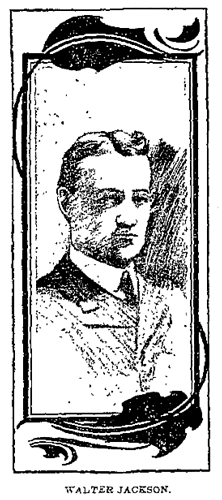
Alas, as the matter became public around the hotel, a dozen or more guests came forward with receipts for money paid that had not been credited, and the shortage quickly jumped above $600 ($13,680 USD2007). Jackson is presumably less gay and debonair behind bars in County this morning.


I may be wrong but isn’t the Ascot Park site now the location of the L.A. Coliseum?
Or, instead of living near the Ascot, you may take Pacific Electric lines Maple, Pedro or Vernon. Anyway — Ascot Park was bordered by Avalon, Slauson, Florence and Central (Avalon then being called "South Park Avenue"). Around 1908 they began having motorcycle and auto racing, and it became a full-fledged speedway after 1910. In 1919 it was sold out to Goodyear, who by the end of 1920 had built its mammoth Goodyear plant.
The next ascot, the New Ascot Speedway, was built in 1923-24. It was on Alhambra Avenue in Lincoln Park (though it’s really El Sereno and there’s no more Alhambra Avenue — its site basically from Multnomah up to the corner of Mission and Soto). In 1928 Glendale American Legion 127 took over the speedway, it thereafter was known as the Legion Ascot. The Legion eventually bowed out of sponsoring the Ascot because it became internationally famous–not because it attracted world-class drivers, but because it killed them. And their spectators. Twenty-one dead in ten years, and about a dozen in the grandstands.
By ’36, after the crash of noted racer Al Gordon and his mechanic Spider Matlock, and the desertion of the fans from the sprint racers of Ascot for the midget racers at Gilmore Stadium (3rd & Fairfax), Ascot shut down and subsequently burned down April 26, 1936 (arson’d by a teenage janitor Linden Emerson who, he testified seven years later, didn’t want to see any more of his friends die there). A collection of homes and Multnomah Elementary is now on the site.
There was a third Ascot Speedway, aka the Southern Ascot Raceway, that operated in South Gate from 1937 to 1942, and a fourth in Gardena at 182nd and Vermont that ran from 1957-1990.
I don’t know if that really answers your question, if its original import was what was originally on the site of the LA Coliseum? I’m going to get back to you on that.
A shot of the Munn, on our left, as we peer down toward Fifth and Olive, ca. 1925.
Where once the Munn looked out over small houses, the Pacific Telephone and Telegraph Building (1924, far right) changed that.
Of course the Munn didn’t have to worry about that for too many years:
…the Munn having been demolished to service the front-end of the 1931 Pacific Electric Railway Co. Hill St. Station electric train shed (part of the 1925 Subway Terminal Building).
A view of the site of the Munn–once nestled up against the back of the Philharmonic Auditorium–from the parking lot where the Olive Street School once stood (next door to the Trenton).
Ok, so mostly this shot’s here because I love the neon sign so much.
Credit where credit is due: all hail the Metro Library Archive!
Here’s that neon sign again…
…vaguely visible front and center.
Wer’e looking at 419 S. Olive:
former site of the Olive Street Public School, once between the Hotel Trenton (a slice of which is seen on the left) and the Fremont (lost to the 4th Street Cut). The backside of 414-416 South Grand looms in the distance.
A shot from the Metro Library Archives, of course.
As long as we’re on the subject, a shot from the other side:
Which we talk a little bit more about here.